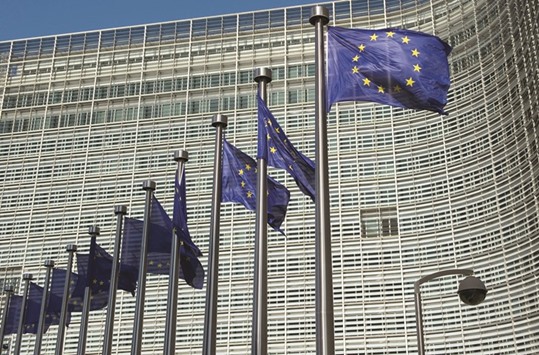Federal Reserve Bank of Atlanta President Dennis Lockhart said US financial markets may be underestimating the odds of a central bank rate increase in June.
“I would put more probability on it being a real option,” Lockhart told reporters at the Atlanta Fed’s financial markets conference at Amelia Island, Florida, when asked about federal funds futures markets indicating odds of a hike at about 10%. “The communication of committee participants and members between now and mid-June obviously should try to prepare the markets for at least a realistic range of possibilities” for the next policy meeting. Lockhart said he supported the Federal Open Market Committee’s decision not to specify to what degree global developments pose risks, compared with a statement prior to its hike at the December meeting that risks to the outlook were “nearly balanced.” Investors halved the odds of a June rate increase last week as the central bank signalled little explicit urgency to tighten.
“It is desirable that financial markets and policy makers be reasonably well aligned,” said Lockhart, a non-voting member of the FOMC this year. “I don’t think it is at all constructive to have a lot of volatility because of surprising the markets.”
Lockhart said he wasn’t leaning for or against a June increase until he sees more data, adding that two interest-rate increases this year are “certainly possible.”
In quarterly forecasts submitted in March, the median projection from FOMC members was for two quarter-point interest-rate increases in 2016, down from the four projected by the median forecast in December. In contrast, prices for federal funds futures contracts imply just one move this year.
“I am sticking with the basic forecast that the remaining three quarters of the year actually will show a rebound from the apparent weakness of the first quarter,” Lockhart said, adding he has been generally encouraged by signs that inflation is firming.
The UK’s June referendum on whether to stay in the European Union will be a consideration for Fed policy makers but doesn’t rule out the possibility of a hike, Lockhart said.
A former Georgetown University professor, Lockhart has led the Atlanta Fed since 2007. The Atlanta Fed district includes Alabama, Florida, Georgia, and portions of Louisiana, Mississippi and Tennessee.
Meanwhile hedge funds, insurers and other companies that do business with Wall Street megabanks are expected to pay a price for regulators’ efforts to make sure any future collapse of a giant lender doesn’t tank the entire financial system.
The Federal Reserve is set to propose so-called stays on derivative contracts that would prevent counterparties from immediately pulling collateral from a failed bank. The plan to be released is meant to give authorities ample time to unwind a firm, hopefully heading off the frantic contagion that spread through markets when Lehman Brothers Holdings toppled in 2008.
Industry groups representing firms such as Citadel, BlackRock and MetLife have resisted efforts to rewrite financial contracts, arguing that it abuses investors’ rights and could make things worse by encouraging trading partners to try to pull away from a bank at the first whiff of trouble, even before a failure.
But asset managers and insurers face a tough task in persuading the Fed to change course. Banks have already agreed to impose delays on deals with other lenders and regulators insist the plan is key to ensuring big firms can safely fail without the taxpayer bailouts seen during the financial crisis.
Lockhart: Optimistic.
EU cuts euro area inflation forecast, warns on debt
Bloomberg
Brussels
The European Commission told the euro area’s largest economies to reduce debt and modernise labor markets as it again slashed its inflation forecast and warned of slower- than-predicted growth across the 19-nation bloc.
France, Spain and Italy, which have persistently failed to hit European Union budget targets, are still off track, the Brussels-based commission said yesterday.
Gross domestic product in the currency area will increase by 1.6% this year and 1.8% in 2017 - both 0.1 percentage point lower than the commission forecast in February. Inflation will average 0.2% this year, below the European Central Bank’s target.
“Decisive policy action to reform and modernise our economies is the only way to ensure strong and sustainable growth, more jobs and good social conditions,” European Commission vice president Valdis Dombrovskis said in a statement. “High levels of public and private debt, vulnerabilities in the financial sector or declining competitiveness” remain the biggest problems.
Six years since Greece received its first international bailout, the scars across the wider euro area remain unhealed. Nations have been unable to narrow deficits and scale back debt to EU-agreed limits and economic output lags behind the US
Even as the ECB uses a mix of low or negative interest rates in addition to €80bn ($92bn) per month in asset purchases, inflation is expected to be less than half the 0.5% the commission predicted in February when it last issued forecasts, and below the ECB’s goal of just under 2%. It will average 1.4% in 2017, the commission said.
Inflation is expected to remain very low “for a longer period than previously forecast,” European Economic Affairs Commissioner Pierre Moscovici told reporters in Brussels. With “gradually increasing energy prices, inflation is expected to step up in the second half of this year,” he said.
Political and social upheaval triggered by the biggest influx of refugees since World War II, the possibility of the UK leaving the EU, an aggressive Russia, the rise of anti-establishment parties and terrorism in its biggest capitals provide a tumultuous backdrop to Europe’s economic fatigue. “There are heightened geopolitical tensions in Europe’s immediate neighbourhood and farther afield and there is serious uncertainty within Europe,” Marco Buti, the commission’s director general for economic and financial affairs, said in a statement accompanying the economic forecasts.
“Although it stems from various domains and circumstances, much of it relates to the same broad theme, namely the capacity and the continued willingness to find and implement common solutions to common challenges.”
The commission confirmed its forecast that Spain, with a caretaker government since December, will miss its deficit- reduction goal for a ninth straight year in 2016, meaning the nation could become the first to receive a financial penalty from the EU. Its deficit will be 3.9% of GDP in 2016 and 3.1% in 2017, still exceeding the EU’s 3% ceiling, the commission said, and wider than the 3.6% and 2.6% it forecast in February. The commission cut its forecast for Spanish GDP growth in 2016 to 2.6% from the 2.8% it predicted in February.
In March, the EU warned Spain that it needed to “take measures to ensure a timely and durable correction of the excessive deficit” and to submit a detailed plan of how it was to do so. The commission has the power to fine countries that persistently breach their deficit commitments up to 0.2% of GDP and send troika-style inspectors to scrutinise national officials. EU commissioners are scheduled to take a decision later this month.
Italy - which has the highest mountain of debt per GDP in the euro area after Greece - is also under scrutiny. The commission forecasts Italy’s public debt to be 132.7% of GDP in 2016, representing no decline from 2015. That’s more than double the EU’s 60% threshold.
The commission downgraded Italy’s growth forecast to 1.1% in 2016 from the 1.4% it predicted in February.
Italy is also under pressure because its structural deficit - stripping away one-time payments and the effects of the business cycle - is widening to a forecast 1.7% of GDP in 2016 from 1% in 2015.
France, the euro area’s second largest economy, which the commission warned in March about its increasing public debt and worsening productivity growth, will also continue to expand more sluggishly than the bloc as a whole. The commission forecasts growth of 1.3% of GDP in 2016 and 1.7% in 2017.
France’s public debt will spiral to 97% of GDP in 2017 from 96.4% in 2016 and 95.8% in 2015, according to yesterday’s forecast.
“The recovery in the euro area remains uneven, both between member states and between the weakest and the strongest in society,” Moscovici said in a statement. “That is unacceptable and requires determined action from governments, both individually and collectively.”
The euro area’s unemployment rate, which is slowly declining from record levels, is forecast to fall to 9.9% in 2017, from 10.3% in 2016 and 10.9% in 2015.

EU flags fly outside the European Commission headquarters building in Brussels. The EU told the euro area’s largest economies to reduce debt and modernise labour markets as it again slashed its inflation forecast and warned of slower- than-predicted growth across the 19-nation bloc.


